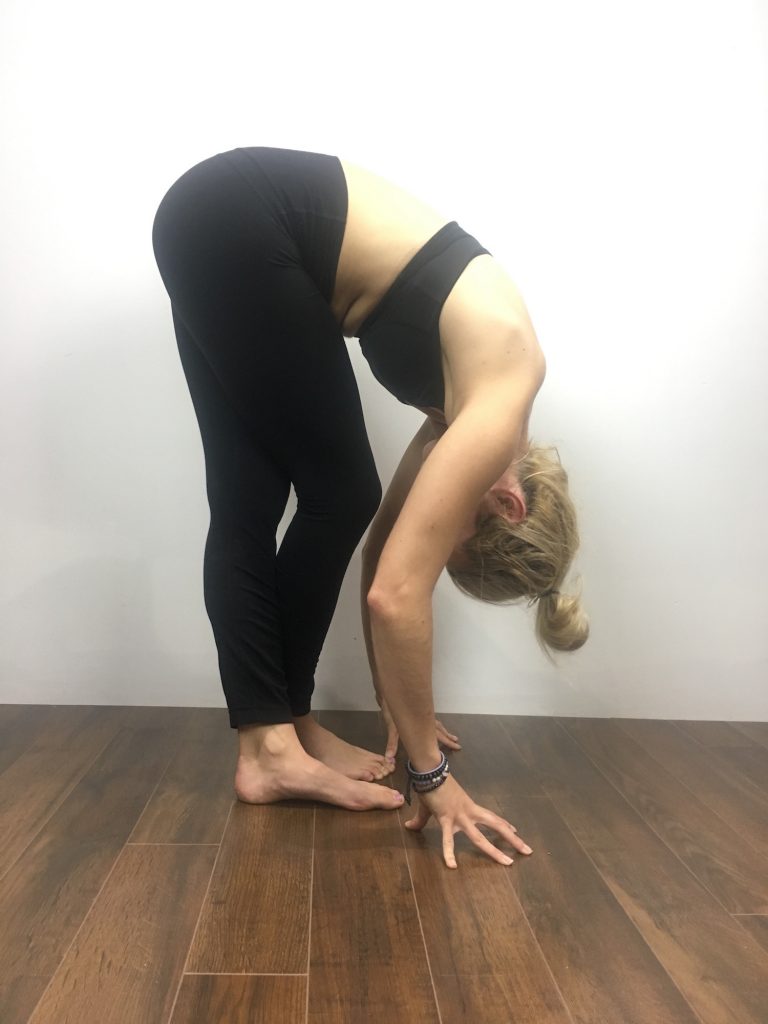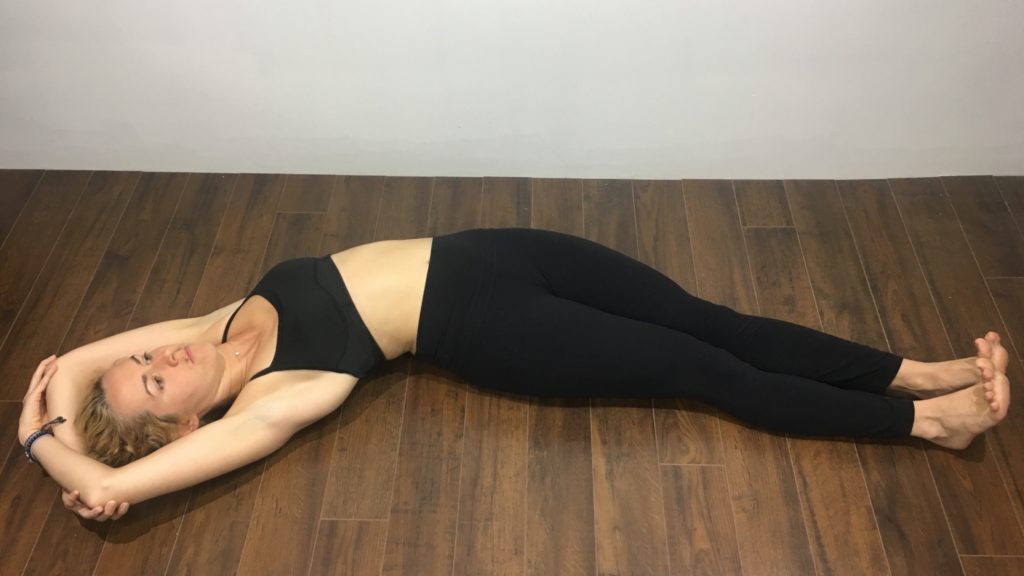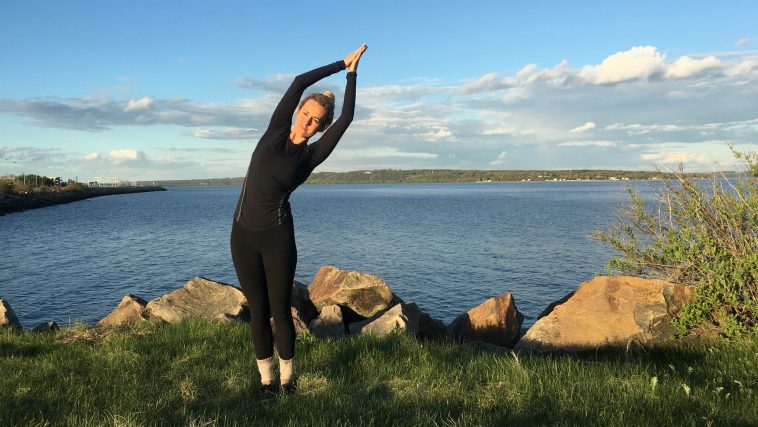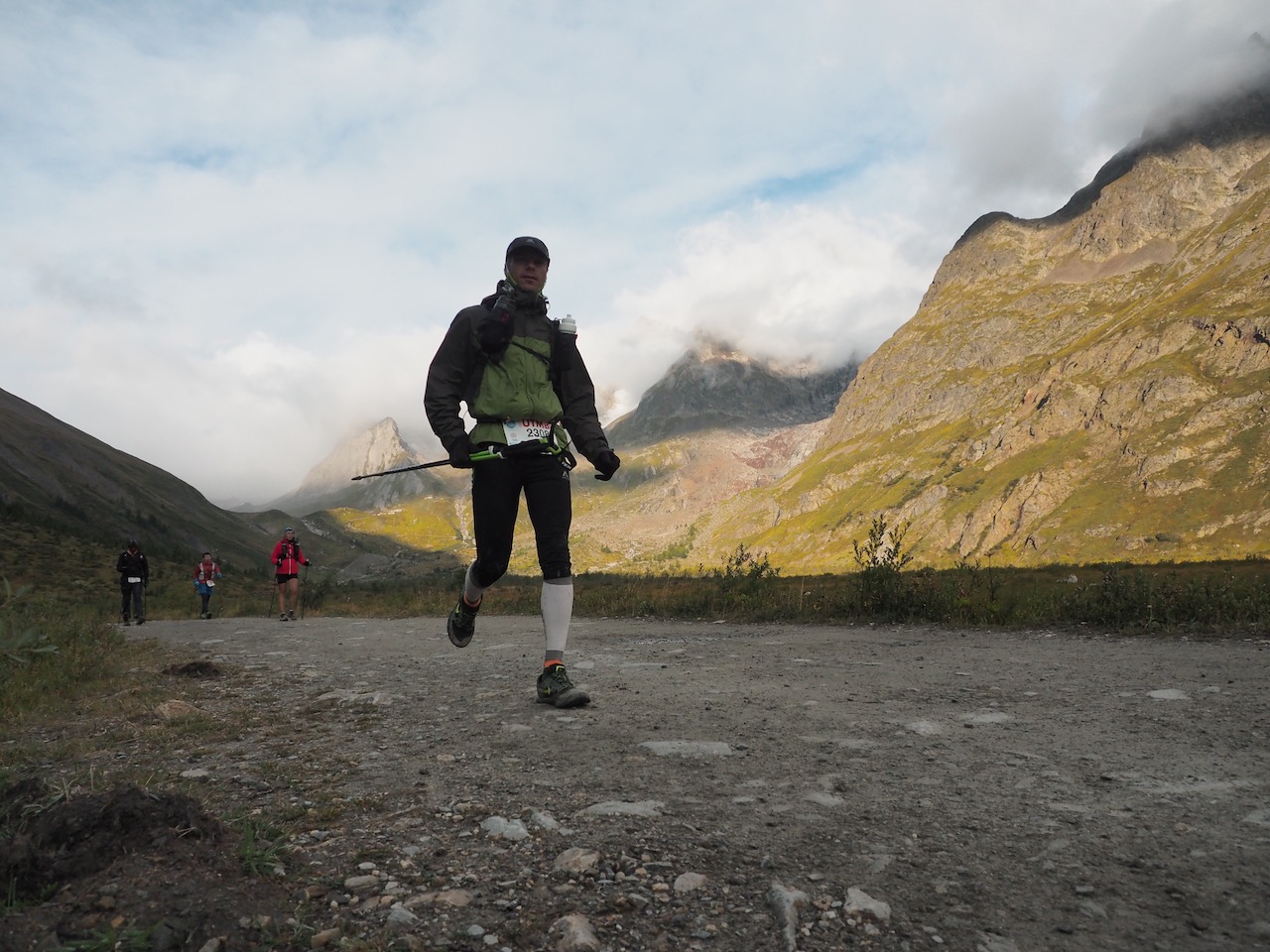When Iliotibial Band Syndrome strikes, it can last for months. Hard, lengthy months. This problem, which manifests in severe knee pain, is common in endurance runners. And, a lack of flexibility is recognized as a risk factor. Stretching can possibly save you a lot of trouble!
The Iliotibial band is a strip of fibrous tissue located laterally on the outer side of the thigh. Here are two simple yoga postures to stretch the Iliotibial Band and the muscles to which it is attached. They will help the body deal with your training load. Don’t wait any longer to get started on these poses!

Cross-legged forward bend (Uttanasana)

This is a very easy and practical posture, given its short duration. Include it in your routine when it is most convenient for you.
From the standing position, cross one leg in front of the other.
Make sure that the knee joint of the back leg is not hyperextended (joint not blocked).
Keep the knee slightly bent.
Place your hands on your hips and push your glutes backwards.
Let the upper body relax towards your thighs, moving forward.
Relax your arms.
Ideally, hands should be resting on a support (floor, yoga block, park bench).
Hold for 30 to 60 seconds on each side.
Benefits :
- Iliotibial Band Stretch
- Stretching of the posterior chain (hamstrings, calves, glutes)
Reclined Half-moon stance (Supta Ardha Chandrasana)

This posture requires a little more time than the first one and is practised while prostrate on the floor. The simplest way to practise it is to do it when you wake up in the morning or in the evening before going to bed. Ideally, don’t do it immediately before or after a workout.
Lie on your back, on the floor or a yoga mat.
Move your feet one step to the right and your upper body to draw a half-moon shape.
Make sure that your pelvis remains in neutral contact with the ground; you should feel your buttocks resting evenly on the ground.
Place your arms above your head, grasping opposite elbows. If you feel discomfort, use a support such as a cushion to support your arms or leave them at your side.
Variation: Cross the ankle of the outer leg over the other to increase the intensity. Always make sure that your pelvis remains supported on the floor.
Ideally maintain the posture for 3 to 5 minutes on each side.
Benefits :
- Iliotibial Band Stretch
- Mobility of the spine in lateral flexion
- Stretching of intercostal muscles (important respiratory muscles)
Yoga should always be done while observing pleasant sensations. If you believe you are injured, consult your health care professional before beginning these exercises.
These postures are offered as a preventive measure. They may also be variations on the exercises suggested by your specialist to improve the flexibility of your IT bands.
Do not hesitate to consult a qualified yoga teacher to guide you safely in your practice.
Translation : William Chabot-Labbé
Éloïse Rochefort is a yoga teacher and marathon runner. She seeks to inspire athletes to improve their performance through yoga as much as inspiring amateurs to discover the many benefits of this thousand-year-old discipline.
Must read :
- Three Great Reasons to Take Up Cross-Training
- Is Running Ultras the Worst Idea Ever?
- Building a Better Runner : training deconstructed to help build your own personalized plan


